More travelogue I’m afraid.
As we left Carcassonne on Monday last in our hired car and headed towards Faugeres, via Thezan, across country, it quickly struck us both that we were seeing an aspect of France never before seen by either of us.
We have spent so much time there in the last years that it now seems remarkable that this was to be the first time either of us had been in any part of France during May or June, and boy did it look different.
There was a greenness and lushness to nature which we just had not seen before. Late spring, it appears, is the rainy season and the display was so good that we forgave the day of rain we had to go through while we were there this time.
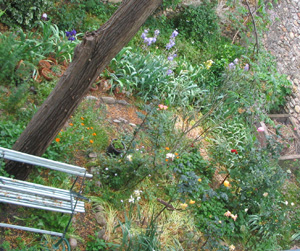
Our own garden which was flourishing, producing great displays of Irises, terrific roses, and countless other flowers all granted to us by a previous green fingered nun.

The tree though was the greatest delight, we have now established that it is an Indian Lilac but this was the first time we had seen it in flower.
The blossom was quite discreet but very pretty and the scent, a mild lilac sweetness which perfumes the whole place is just beautiful.
Something to look forward to, each May, from now on.
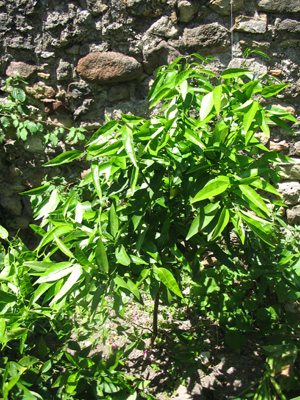
We were also delighted to find that, possibly due to last summer’s watering, our citrus (lemon, orange or lime, we don’t know yet) tree is now green and healthy looking.

Virtually the only crop of the area of Herault we live in is the vine but these had now recovered from their February pruning and were in good growth.
It rather surprised us on a walk to see a large wood still remaining in the centre of the vines but then we discovered that it was an oak wood, obviously retained for the symbiotic relationship between its roots and another cash crop of the area, the truffle.
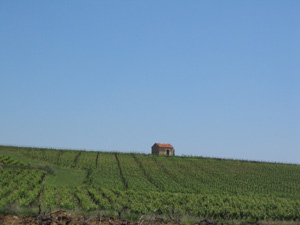
The little Bothys, or Bories which dot the vines here are an indication of the method of farming and living. Because the farmers don’t live in farms in the vineyards, but sensibly together in villages, they usually have a little hut, sometimes big enough to fit a bed, to keep their tools for their vine maintenance.
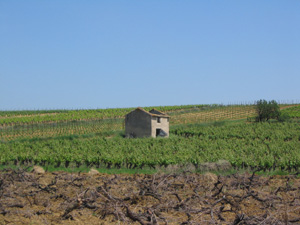
Here you see an example of a spreading movement in our local vine fields.
The old, “wine lake” war horse vines, with grapes like the Carignan, are being dug up and ruthlessly ploughed in to make room for the newer finer grape varieties so that Languedoc can compete in international markets by producing quality instead of quantity. (Our own wine co-op in the village went bust last year so there is extensive replanting happening around us)
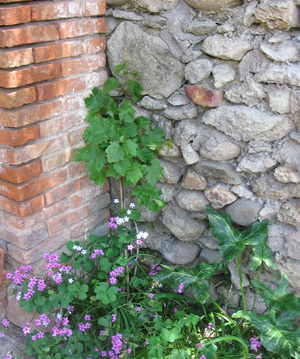
We have decided to add to the vine harvest our selves by planting a vine in our garden, this is however a Chasselais, a white table grape which will, we hope provide us with some dessert grapes in a few years time.

Comments
The comments are closed.